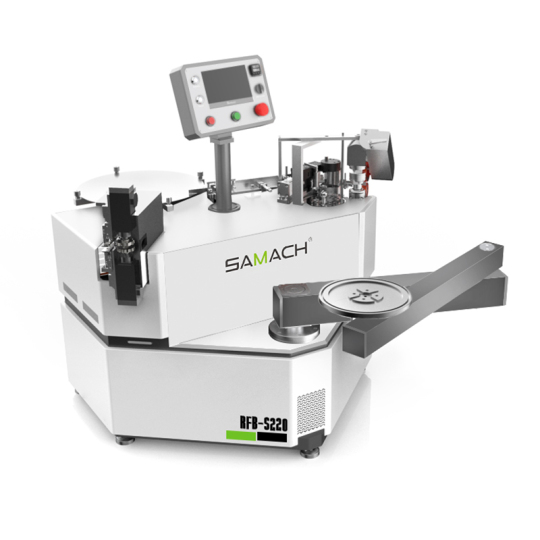
## Why the Edge Banding Machine Still Matters in 2025
In today’s cabinet and furniture workflows, the Edge Banding Machine is foundational to seamless edges using PVC/ABS/veneer/melamine tapes.
Across shop sizes, a well-specified edgebander stabilizes quality and supports growth.
## What Is an Edge Banding Machine?
An Edge Banding Machine seals panel edges with tape and processes it to create a nearly invisible joint.
Typical stations include: edge prep, adhesive application, tape feeding with pressure rollers, end trimming, flush trimming, and fine finishing.
## From In-feed to Buffing: The Flow
1. In-feed & Alignment — Accurate in-feed maintains squareness.
2. Pre-milling — Remove 0.3–1.0 mm to eliminate saw chatter and out-of-square conditions.
3. Adhesive — Hot-air/laser zero-joint activation.
4. Tape Bonding — Controlled pressure ensures a tight joint.
5. End Cut — Remove overhang at leading/trailing edges.
6. Top/Bottom Trim — Trim excess flush to panel faces.
7. Corner Rounding (if equipped) — Rounds front/rear corners for a factory feel.
8. Scraping & Buffing — Ready-for-install finish.
## Choosing a Machine Class
• Manual/Portable — lowest cost, on-site fixes, but variable quality and slow throughput.
• Starter Auto — simple stations, good upgrade from manual methods.
• Growth-Stage — quality + throughput balance with recipe memory.
• Industrial/High-End — zero-joint (hot-air/laser), servo stations, high feed speed, line integration.
• Contour/Curve — for irregular parts; often needs special tapes or adhesives.
## EVA vs PUR vs Zero-Joint
• EVA — great for prototypes and standard interiors; moderate durability.
• PUR — ideal for high-end or humid environments; higher cost, tighter process.
• Zero-Joint — no liquid glue pot; perfect aesthetics with matched functional layers.
Tip: Stock EVA + PUR if your machine supports quick glue-pot swaps.
## Key Specifications to Compare
• Speed — balance pace with finish requirements.
• Panel thickness (~10–60 mm) — cover your typical work and thick countertop cases.
• Tape thickness — 0.4–1 mm (lightweight) vs 2–3 mm (robust edges).
• Pre-milling power — enough to remove website defects cleanly (often dual motors).
• Corners — important for doors/drawer fronts.
• Fine finish — fewer tool marks, even sheen.
• Glue tech — drives TCO, appearance, and process control.
• Controls/recipes — touchscreen, memory speeds changeovers and consistency.
• Extraction — cleaner edges and safer air.
• Switchover — faster changes, higher OEE.
• Utilities — verify power, air, space.
## Match the Machine to Your Use Case
• Custom residential cabinets — mid-range with pre-mill, PUR-ready, corner rounding, recipe memory.
• Commercial millwork/furniture — industrial model with servo stations, high speed, auto setups, in-line QC.
• Design-forward (gloss/super-matt) — zero-joint machine; stock exact-match functional-layer tapes.
• Flat-pack — durability + speed are key.
• First automation step — entry auto with EVA glue pot and essential trimming/scraping.
## Run It Right: Practical Tips
• Keep utilities stable for predictable quality.
• Set pre-mill removal just enough to clean the edge (≈0.5 mm total).
• Follow adhesive curves; purge and clean on schedule.
• Start with OEM defaults, then test and lock recipes.
• Watch finish to time tool changes.
• Clean squeeze-out immediately; use proper PUR cleaners and timing.
• Safety protects people and quality.
## Fixing Edge Banding Issues
• Glue line showing — tune temperature/pressure; improve edge prep; upgrade adhesive system.
• Peeling at corners — adjust rounding and adhesion window.
• Rough veneer — tool maintenance + moderate speed.
• Excess glue — tune gap/pressure.
• Tracking off — align fences and tape feed.
## Materials & Tape Choices
Choose PVC/ABS for durability and variety; wood veneer for natural aesthetics; thin melamine for budgets; aluminum/acrylic for statement edges with special setup.
Verify color match before production.
## Boosting Throughput with Integration
Integration reduces handling across shifts.
## Sustainability Considerations
Choose adhesives/tapes that reduce emissions; invest in filtration.
## Edge Banding Machine FAQs
Best speed? No universal value—let quality lead.
EVA vs PUR? EVA is easier to clean; PUR resists heat/moisture with a thinner line.
Need pre-milling? For tight glue lines, yes.
What is zero-joint? Contactless activation of a functional layer for design-grade finishes.
Tool life? Watch for fuzzing/tear-out; then sharpen.
## Bottom Line
Treat the Edge Banding Machine as a quality engine. Match EVA/PUR/zero-joint to aesthetic and maintain tooling for repeatable results. }